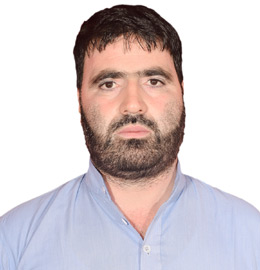Himalayan Fluvial Systems (I-G-B): Fluvial landforms, extreme events, erosion-climate-tectonic coupling, migration of channels, material & water fluxes to the Oceans, Hydrograph separation studies, and natural pathways for CO2 sequestration on Geological time scales.

Isotope Hydrology
Chemical and physical weathering of rocks on the continents drive the geochemical cycles of elements on the earth’s surface. The intensity and the nature of weathering and erosion of rocks are imprinted in the composition of dissolved and particulate phases of rivers. Chemical weathering of rocks, specifically silicate rocks exerts significant control on the CO2 budget of the atmosphere on long time scales.
The role of change in silicate weathering as a driver of climate change is a topic of debate among geochemists. In this context, the uplift of the Himalaya in contributing to enhanced silicate weathering has been a subject of investigation during the last couple of decades.
Among the various rivers draining the Himalaya, chemical weathering in the Indus – Ganga – Brahmaputra (I-G-B) systems serve as a major pathway for transporting the weathering products from the Himalaya to the Bay of Bengal. This system ranks first among the World Rivers in sediment supply to the ocean and fourth in water discharge.
Our activity contains the issues related to water, and is summarized as follows :
-
-
Rejuvenation of Himalayan streams and springs.
-
Ground water dynamics and Karst Aquifers in the I-G-B Himalaya and plains.
-
Anthropogenic forcing of Himalayan Rivers from their source to Sink
Geothermal Studies & Environmental geochemistry
A lot of effort is on to meet the overwhelming energy requirements at one hand and to reduce the CO2 emission on the other hand towards the energy security. For this purpose, several forms of renewable and unconventional energy resources are being explored. The geothermal field in the Himalaya offers a renewable energy resource that has a great potential for generating electricity, heating, and cooling. The aim of this activity is –
-
To assess the energy reserve of springs from the NW Himalaya with a view to harnessing this green energy as electrical energy for domestic/local purposes(Sameer Tiwari).
-
Assessment of the emission of greenhouse gases from the geothermal environment into the atmosphere(Sameer Tiwari).
-
Anthropogenic forcing of Glaciers and pristine Lakes/Ponds: Real-time measurement of greenhouse gases over the remote glacierised regions of Himalaya (Sameer Tiwari).
-
Assessing Climate Change Implications of Greenhouse Gas Emissions from mega hydropower reservoir/riverine system/lakes and remote glaciated regions (Sameer Tiwari).
-
Quantify the contribution of meltwater and investigate the solute acquisition processes in snow and ice in relation to their environmental and climatic significance (Sameer Tiwari).
Team Members





